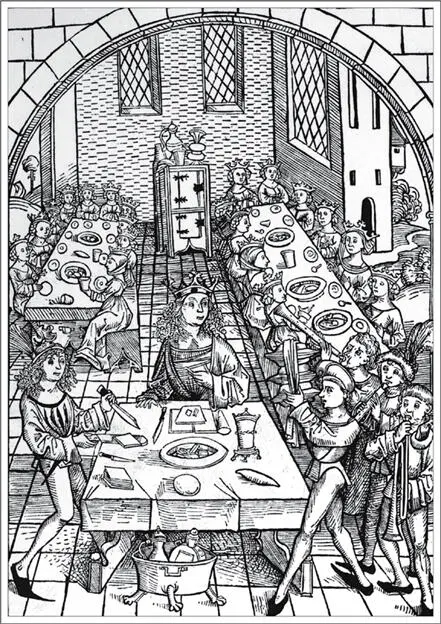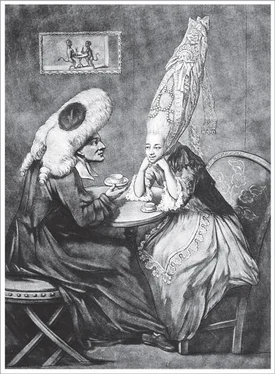Bill Bryson - At Home
Здесь есть возможность читать онлайн «Bill Bryson - At Home» весь текст электронной книги совершенно бесплатно (целиком полную версию без сокращений). В некоторых случаях можно слушать аудио, скачать через торрент в формате fb2 и присутствует краткое содержание. Жанр: Старинная литература, на английском языке. Описание произведения, (предисловие) а так же отзывы посетителей доступны на портале библиотеки ЛибКат.
- Название:At Home
- Автор:
- Жанр:
- Год:неизвестен
- ISBN:нет данных
- Рейтинг книги:4 / 5. Голосов: 1
-
Избранное:Добавить в избранное
- Отзывы:
-
Ваша оценка:
- 80
- 1
- 2
- 3
- 4
- 5
At Home: краткое содержание, описание и аннотация
Предлагаем к чтению аннотацию, описание, краткое содержание или предисловие (зависит от того, что написал сам автор книги «At Home»). Если вы не нашли необходимую информацию о книге — напишите в комментариях, мы постараемся отыскать её.
At Home — читать онлайн бесплатно полную книгу (весь текст) целиком
Ниже представлен текст книги, разбитый по страницам. Система сохранения места последней прочитанной страницы, позволяет с удобством читать онлайн бесплатно книгу «At Home», без необходимости каждый раз заново искать на чём Вы остановились. Поставьте закладку, и сможете в любой момент перейти на страницу, на которой закончили чтение.
Интервал:
Закладка:
In humbler dwellings, matters were generally about as simple as they could be. The dining table was a plain board called by that name. It was hung on the wall when not in use, and was perched on the diners’ knees when food was served. Over time, the word board came to signify not just the dining surface but the meal itself, which is where the board comes from in room and board . It also explains why lodgers are called boarders and why an honest person—someone who keeps his hands visible at all times—is said to be aboveboard.
Seating was on plain benches—in French, bancs , from which comes banquet . Until the 1600s, chairs were rare—the word chair itself dates only from about 1300—and were designed not to be comfortable but to impute authority. Even now, of course, the person in charge of a meeting chairs it, and a person in charge of a company is the chairman of the board—a term that additionally, and a little oddly, recalls the dining habits of medieval peasants.
Medieval banquets show people eating all kinds of foods that are no longer eaten. Birds especially featured. Eagles, herons, peacocks, sparrows, larks, finches, swans, and almost all other feathered creatures were widely consumed. This wasn’t so much because swans and other birds were fantastically delicious—they weren’t; that’s why we don’t eat them now—but rather because other, better meats weren’t available. Beef, mutton, and lamb were hardly eaten at all for a thousand years because the animals they came from were needed for their fleeces, manure, or muscle power and thus were much too valuable to kill.

A medieval banquet (photo credit 3.1)
Even had meat been freely available, it was forbidden much of the time. Medieval diners had to accommodate three fish days a week, plus forty days of Lent and many other religious days when land-based flesh was forbidden. The total number of days of dietary restriction varied over time, but at its peak nearly half the days of the year were “lean” days, as they were known. There was hardly a fish or other swimming thing that wasn’t consumed. The kitchen accounts for the Bishop of Hereford show his household eating herring, cod, haddock, salmon, pike, bream, mackerel, barr, ling, hake, roach, eels, lampreys, stockfish, tench, trout, minnows, gudgeon, gurnet, and a few others—more than two dozen types altogether. Also widely eaten were barbel, dograves, dace, and even porpoise. For much of the medieval period the largest source of animal protein for most people was smoked herring. Until the time of Henry VIII, failing to observe fish days was punishable by death, at least in theory. Fish days were abandoned after the break with Rome, but were restored by Elizabeth in the interests of supporting the British fishing fleet. The church was keen to keep the fish days, too, not so much because of any religious conviction as because it had developed a lucrative sideline in selling dispensations.
After an evening meal, the inhabitants of the medieval hall had no bedrooms in which to retire. We “make a bed” today because in the Middle Ages that is essentially what you did—you rolled out a cloth sleeping pallet or heaped a pile of straw, found a cloak or blanket and fashioned whatever comfort you could. Sleeping arrangements appear to have remained relaxed for a long time. The plot of one of Chaucer’s Canterbury Tales hinges on the miller’s daughter getting into the wrong bed in her own home, something she could hardly do if she slept in the same place every night. Until well into the seventeenth century, bed meant only the mattress and what it was stuffed with; for the frame and its contents there was the separate word bedstead .
Household inventories into the Elizabethan period show that people placed great attachment to beds and bedding, with kitchen equipment following behind. Only then did general household furniture make it onto inventories, and then generally in vague terms like “a few tables and some benches.” People, it seems, simply were not that attached to their furniture, in much the way that we are not emotionally attached to our appliances. We wouldn’t want to be without them, of course, but they are not treasured heirlooms. One other thing people recorded with care was, somewhat surprisingly, window glass. Other than in churches and a few wealthy homes, window glass was a rarity well into the 1600s. Eleanor Godfrey, in The Development of English Glassmaking, 1560–1640 , notes how in 1590 an alderman in Doncaster left his house to his wife but the windows to his son. The owners of Alnwick Castle from the same period always had their windows taken out and stored when they were away to minimize the risk of breakage.
Even in the largest houses generally only the windows in the most important rooms had glass in them. All the others were covered with shutters. Lower down the economic scale, windows remained rare until quite late. Even glaziers rarely had glass windows in their own homes at the time William Shakespeare was born, in 1564; by the time of his death half a century later, that had changed somewhat, though not completely. Most middle-class homes had glass in about half the rooms by then.
In even the best homes comfort was in short supply. It really is extraordinary how long it took people to achieve even the most elemental levels of comfort. There was one good reason for it: life was tough. Throughout the Middle Ages, a good deal of every life was devoted simply to surviving. Famine was common. The medieval world was a world without reserves; when harvests were poor, as they were about one year in four on average, hunger was immediate. When crops failed altogether, starvation inevitably followed. England suffered especially catastrophic harvests in 1272, 1277, 1283, 1292, and 1311, and then an unrelievedly murderous stretch from 1315 to 1319. And this was of course on top of plagues and other illnesses that swept away millions. People condemned to short lives and chronic hardship are perhaps unlikely to worry overmuch about decor. But even allowing for all that, there was just a great, strange slowness to strive for even modest levels of comfort. Roof holes, for instance, let smoke escape, but they also let in rain and drafts until somebody finally, belatedly invented a lantern structure with louvered slats that allowed smoke to escape but kept out rain, birds, and wind. It was a marvelous invention, but by the time it was thought of, in the fourteenth century, chimneys were already coming in and louvered caps were not needed.
Beyond that, we know practically nothing about household interiors before the middle of the Middle Ages. In fact, according to the furniture historian Edward Lucie-Smith, we know more about how ancient Greeks and Romans sat or reclined than we do about the English of eight hundred years ago. Almost no furniture survives from before 1300 or so, and illustrations in manuscripts or paintings are scarce and contradictory. Furniture historians are so starved of fact that they must even trawl through nursery rhymes. It is often written that a kind of medieval footstool was called a tuffet —a presumption based entirely on the venerable line “Little Miss Muffet sat on a tuffet.” In fact, the only place the word appears in historic English is in the nursery rhyme itself. If tuffets ever actually existed, they are not otherwise recorded.
All this applies to the homes of the comparatively well-to-do, but two things need to be borne in mind: superior homes were not necessarily all that superior, and inferior homes were not necessarily all that bad. Grander homes, on the whole, weren’t more complex structures, they just had bigger halls.
Читать дальшеИнтервал:
Закладка:
Похожие книги на «At Home»
Представляем Вашему вниманию похожие книги на «At Home» списком для выбора. Мы отобрали схожую по названию и смыслу литературу в надежде предоставить читателям больше вариантов отыскать новые, интересные, ещё непрочитанные произведения.
Обсуждение, отзывы о книге «At Home» и просто собственные мнения читателей. Оставьте ваши комментарии, напишите, что Вы думаете о произведении, его смысле или главных героях. Укажите что конкретно понравилось, а что нет, и почему Вы так считаете.












